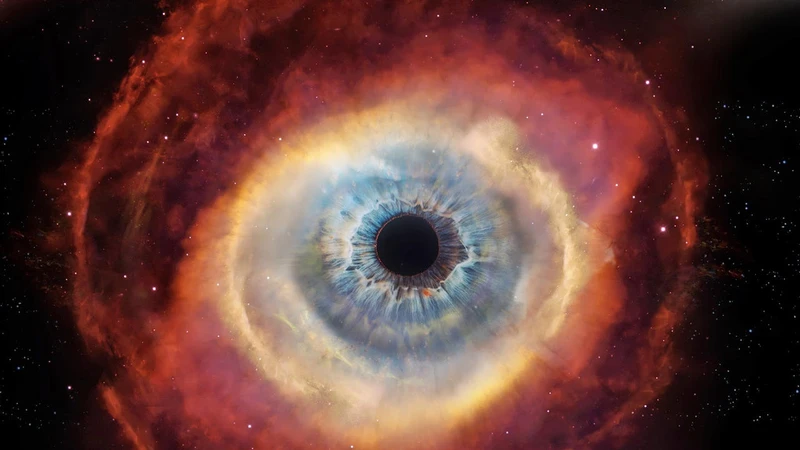“Cosmos: A Personal Voyage,” the 1980 television series hosted by Carl Sagan, stands as one of the most influential science documentaries ever produced. Airing on PBS, it captivated audiences worldwide with its poetic narrative, stunning visuals, and profound insights into the universe. This essay delves into the series’ content, impact, and enduring legacy.
Genesis and Structure
Premiering on September 28, 1980, “Cosmos: A Personal Voyage” comprised 13 episodes, each approximately 60 minutes long. The series was a collaboration between Sagan, his wife Ann Druyan, and writer Steven Soter. Directed by Adrian Malone, the series was produced by Gregory Andorfer and Rob McCain. Sagan’s role as both host and narrator was pivotal, guiding viewers through complex scientific concepts with clarity and enthusiasm. The series was broadcast on PBS in the United States and reached audiences in over 60 countries, making it one of the most-watched series in the history of public television.
Each episode of “Cosmos” was meticulously crafted to explore a specific theme or aspect of science. The series covered a wide range of topics, including the history of the universe, the development of life on Earth, the potential for extraterrestrial life, and the future of humanity. Sagan employed the “Ship of the Imagination,” a conceptual spacecraft, to transport viewers through time and space, making abstract concepts more tangible. The Cosmic Calendar, a metaphorical timeline that compressed the history of the universe into a single year, was a recurring motif that helped contextualize the vastness of cosmic time.
Scientific and Educational Impact
“Cosmos” was groundbreaking in its approach to science communication. At a time when scientific programming was often dry and inaccessible, Sagan’s series broke new ground by presenting complex topics in an engaging and understandable manner. The use of visual effects, animation, and compelling storytelling made science not only accessible but also entertaining. Sagan’s ability to convey the wonder and beauty of the universe inspired a generation to pursue careers in science and sparked a renewed public interest in scientific exploration.
The series also addressed pressing societal issues, such as environmental degradation and the threat of nuclear war. Sagan used the example of Venus’s inhospitable climate to warn of the potential consequences of unchecked greenhouse gas emissions on Earth. He advocated for scientific literacy as a means to empower individuals to make informed decisions about the future of the planet. This emphasis on science as a tool for societal progress resonated with viewers and contributed to the series’ lasting influence.
Cultural and Philosophical Themes
Beyond its scientific content, “Cosmos” delved into philosophical and existential questions. Sagan frequently reflected on humanity’s place in the universe, the nature of consciousness, and the ethical implications of scientific advancement. His humanistic perspective emphasized the importance of curiosity, skepticism, and the pursuit of knowledge. Sagan’s eloquent narration, coupled with the series’ evocative visuals, created a sense of awe and wonder that transcended the confines of traditional science programming.
The series also addressed the tension between science and religion, particularly in its discussions of the origins of life and the universe. Sagan advocated for a scientific worldview grounded in evidence and reason, challenging viewers to question dogma and embrace a more open-minded approach to understanding the cosmos. This aspect of “Cosmos” sparked debates and discussions about the relationship between science and belief systems, highlighting the series’ broader cultural impact.
Legacy and Influence
The impact of “Cosmos” extended far beyond its original broadcast. The series inspired numerous books, including Sagan’s own “Cosmos,” which expanded upon the themes presented in the television program. The book became a bestseller and further solidified Sagan’s role as a leading public intellectual. The success of “Cosmos” also paved the way for future science communicators, influencing figures like Neil deGrasse Tyson, who later hosted the 2014 revival, “Cosmos: A Spacetime Odyssey.” Tyson has acknowledged Sagan’s influence, describing him as a mentor and a model for effective science communication.
In 2014, “Cosmos: A Spacetime Odyssey” was produced as a follow-up to Sagan’s original series. Hosted by Neil deGrasse Tyson, the series aimed to continue Sagan’s mission of making science accessible and engaging to the public. The revival received critical acclaim and introduced a new generation to the wonders of the universe, demonstrating the enduring relevance of Sagan’s vision.
Conclusion
“Cosmos: A Personal Voyage” remains a seminal work in the realm of science communication. Its blend of scientific rigor, philosophical inquiry, and artistic presentation set a new standard for educational programming. Carl Sagan’s ability to inspire wonder and curiosity about the universe continues to resonate with audiences today. The series not only educated viewers about the cosmos but also instilled a sense of responsibility toward the planet and a commitment to the pursuit of knowledge. As we look to the future, the legacy of “Cosmos” serves as a reminder of the power of science to illuminate the mysteries of the universe and to inspire positive change in the world.

